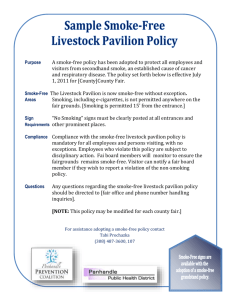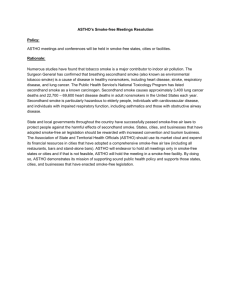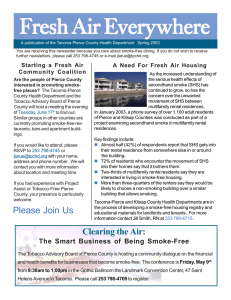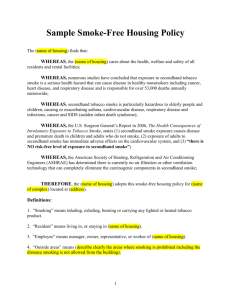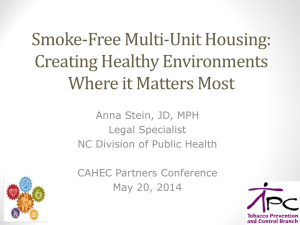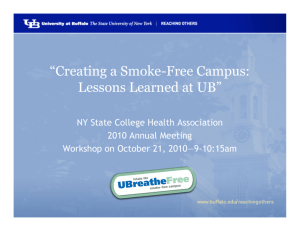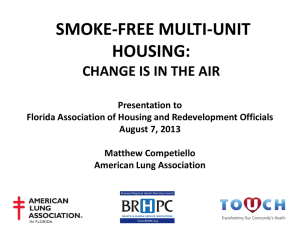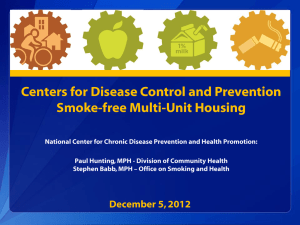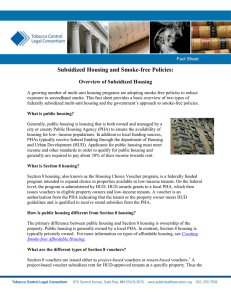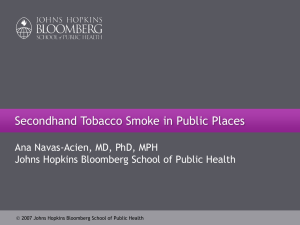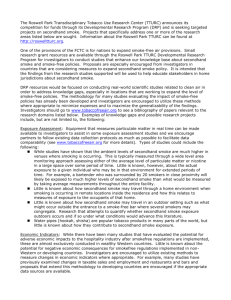Creating a Smoke
advertisement
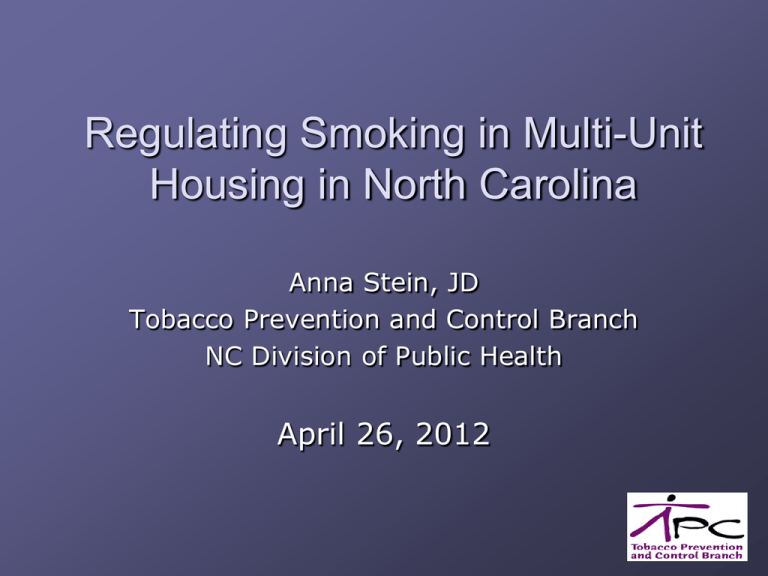
Regulating Smoking in Multi-Unit Housing in North Carolina Anna Stein, JD Tobacco Prevention and Control Branch NC Division of Public Health April 26, 2012 Secondhand Smoke and Multi-Unit Housing People in US spend an average of 69% of their time in their homes Secondhand smoke (SHS) travels from unit to unit No-smoking policies only way to eliminate SHS exposure Disproportionate impact of SHS in multi-unit housing on low-income citizens Hewett, Sandell, Anderson & Niebuhr, 2006; King et al., 2009; Pizacani et al., 2012 Smoke-free Housing Policies are Good for Public Health Decreased SHS exposure for nonsmokers Decreased cigarette consumption among smokers Increased quit rates 2.6%→13.7% Cheng, Glantz & Lightwood, 2011; Pizacani et al., 2012 Smoke-Free Policies are Good for Business Reduced turnover costs Reduced fire risk Strong tenant demand Hennrikus et al., 2003; Hewett et al., 2007; US Fire Administration, 2010; Winickoff et al., 2010; Ong, 2011 Smoke-Free Policies are Legal Market-rate housing Affordable housing (e.g. Section 8) 2010 HUD notice recommending smoke-free policies Public housing 2009 HUD notice recommending smoke-free policies www.publichealthlawcenter.org/topics/tobacco-control/smokingregulation/housing Restricting Smoking in Public Housing NCGS § 130A-498(b1): A local ordinance or other rules, laws, or policies adopted under this section may not restrict or prohibit smoking in the following places: (1) A private residence. NCGS § 157-9(a) “No provisions with respect to the acquisition, operation or disposition of property by other public bodies shall be applicable to [a public housing] authority unless the legislature shall specifically so state.” Legal Claims Against Landlords for Secondhand Smoke Breach of the warranty of habitability Breach of the covenant of quiet enjoyment Constructive eviction Technical Assistance Legal Center, 2007 Tobacco Prevention and Control Branch and Smoke-Free Housing Outreach to housing industry Online toolkit opening soon Community Transformation Grant (CTG) Community Transformation Grant Strategic Direction 1: Tobacco free living 1. Increase smoke-free regulations of local government buildings and of indoor public places 2. Increase tobacco-free regulations for government grounds, including parks and recreational areas. 3. Increase smoke-free housing policies in affordable multi-unit housing and other private sector marketbased housing. 4. Increase the number of 100% tobacco-free policies on community college campuses and state and private university/college campuses. Further Information or Assistance from the Tobacco Prevention and Control Branch Sally Herndon, MPH Branch Head (919) 707-5401 sally.herndon@dhhs.nc.gov Anna Stein, JD (919) 707-5406 anna.stein@dhhs.nc.gov Jim D. Martin, MS Director of Policy (919) 707-5404 jim.martin@dhhs.nc.gov
